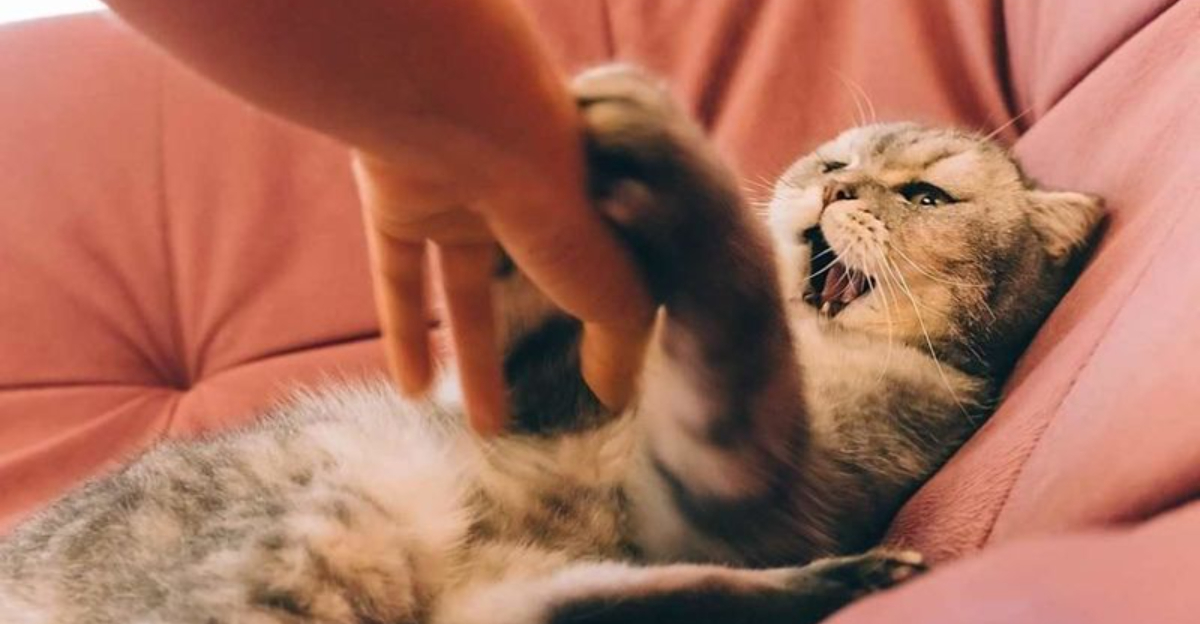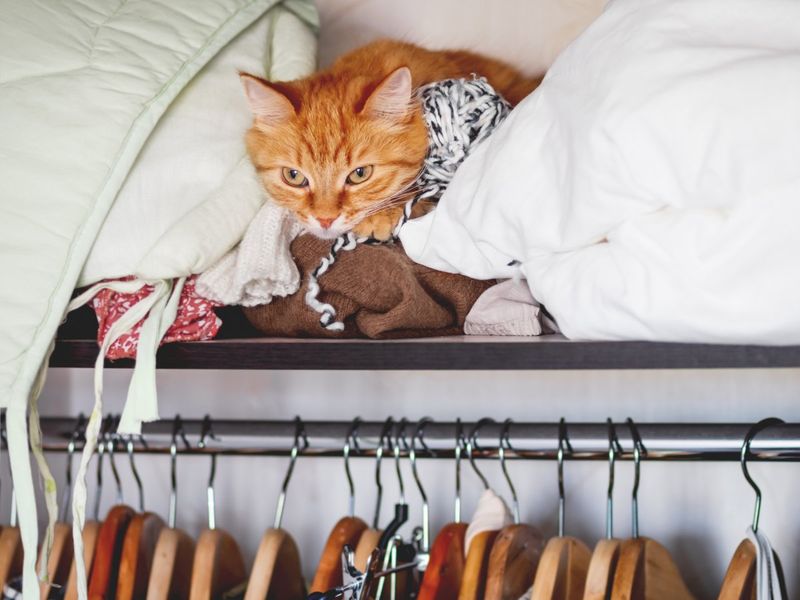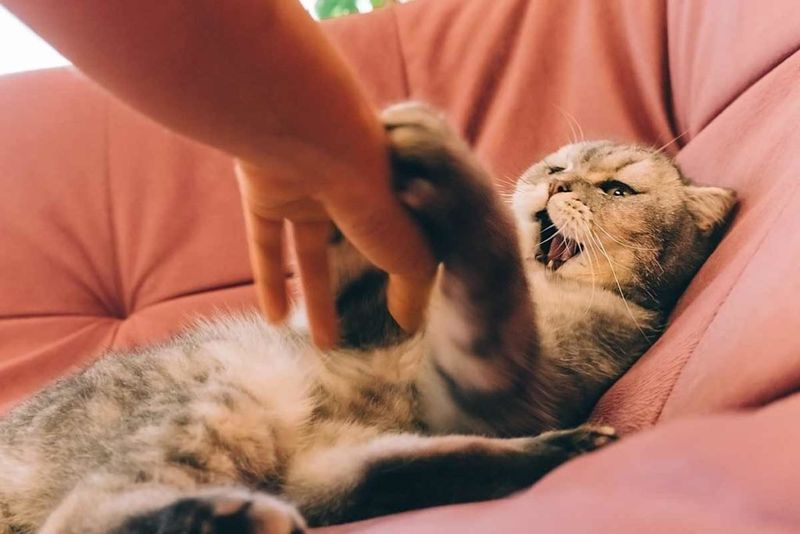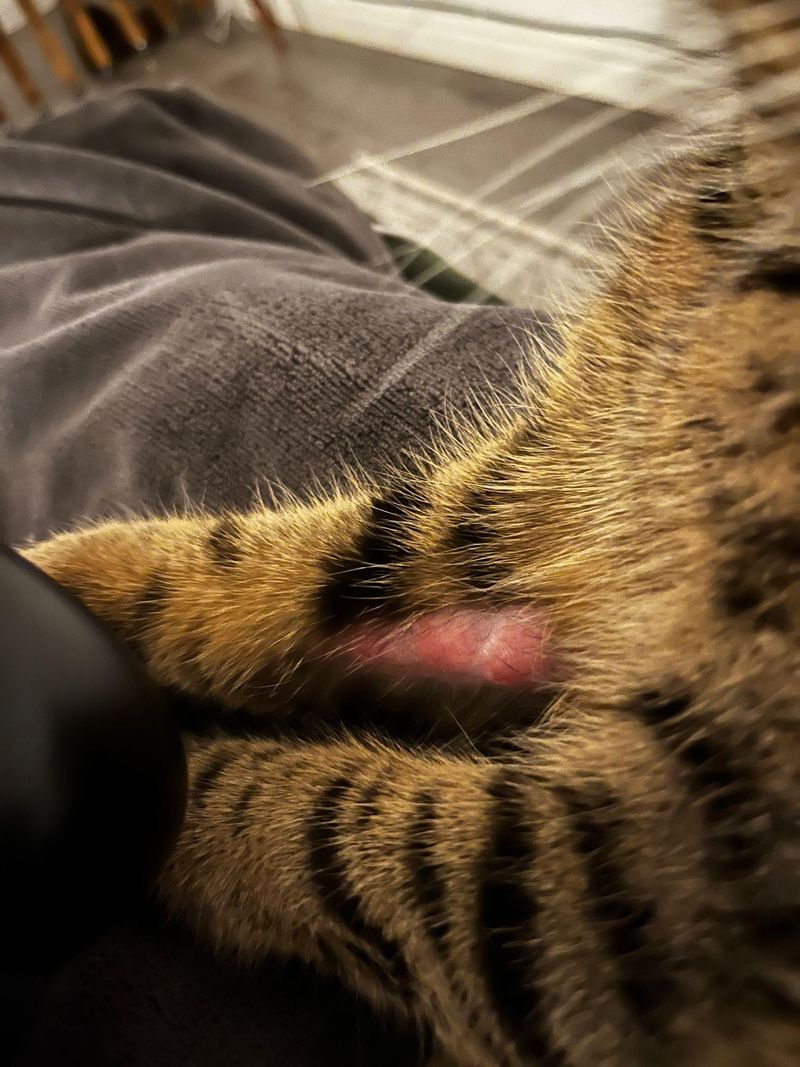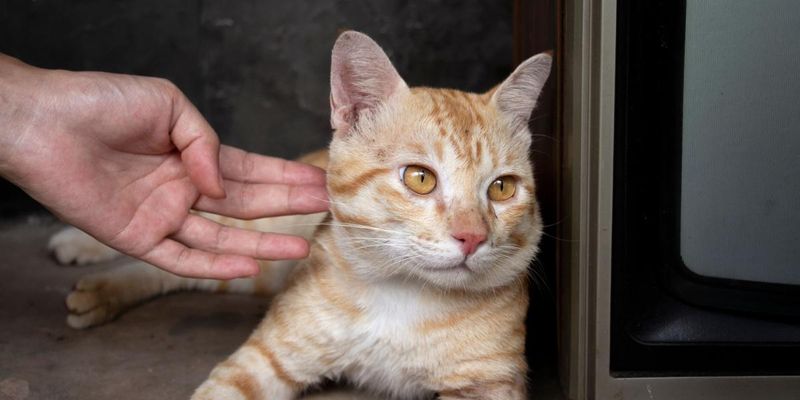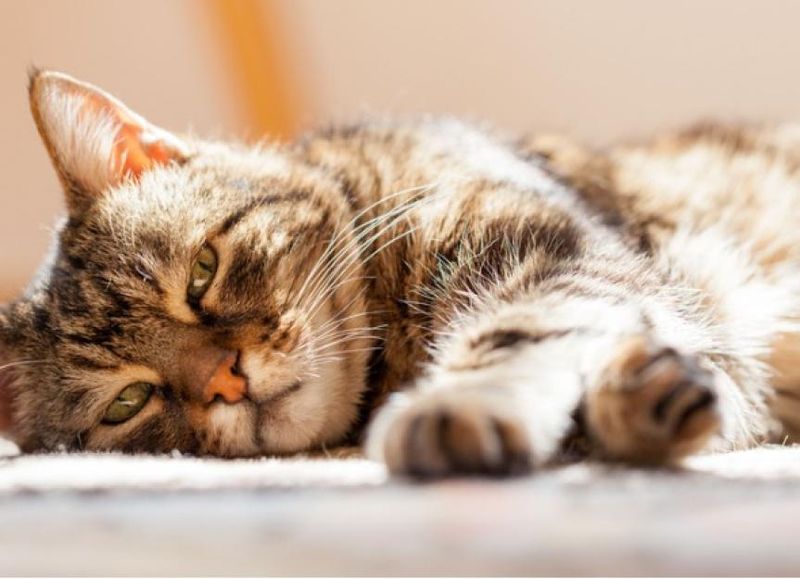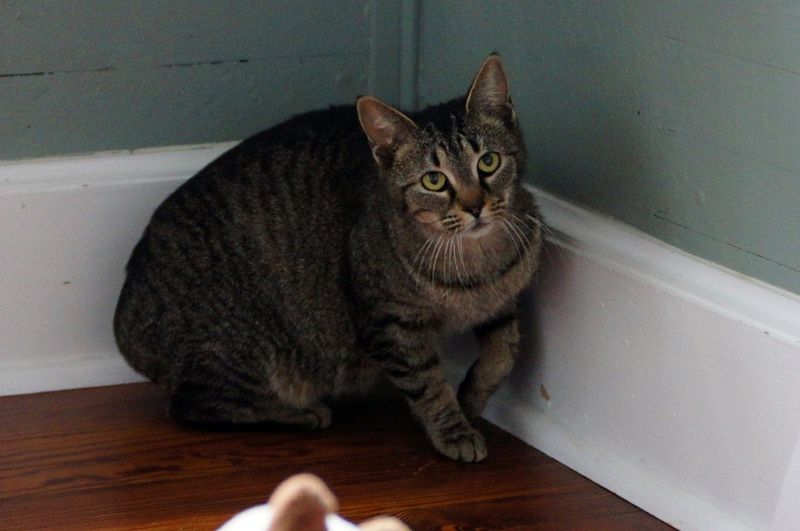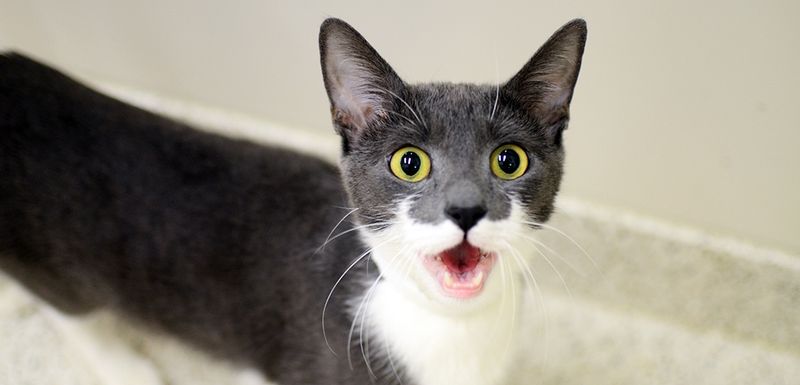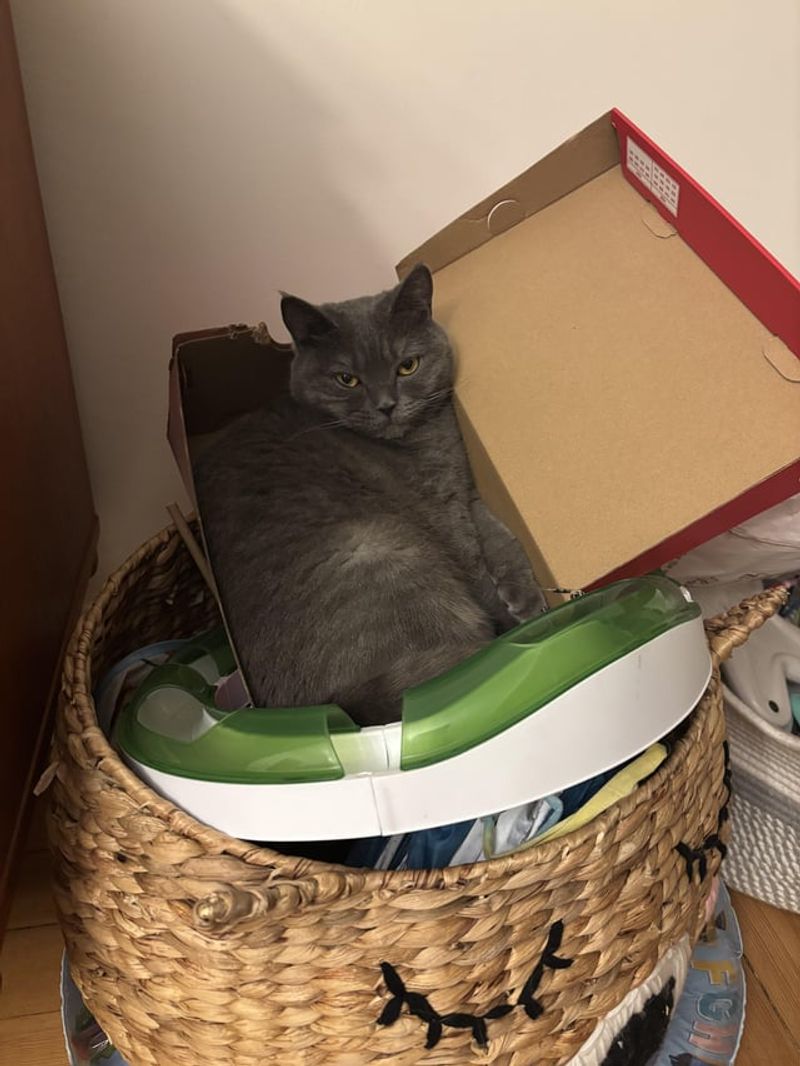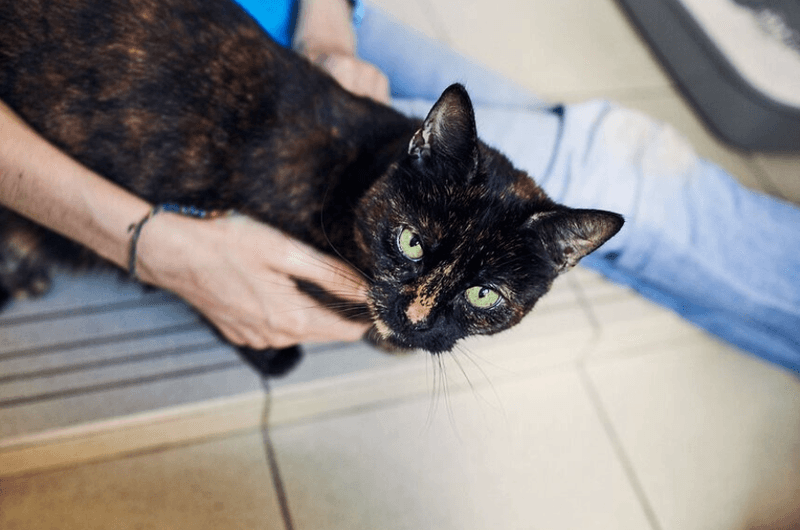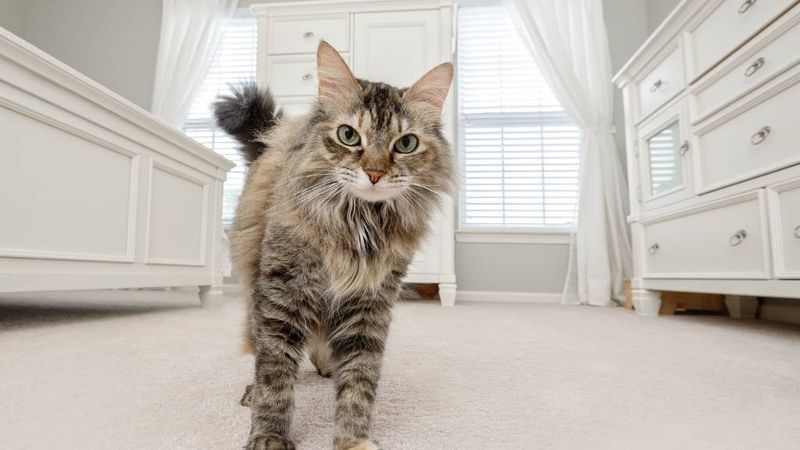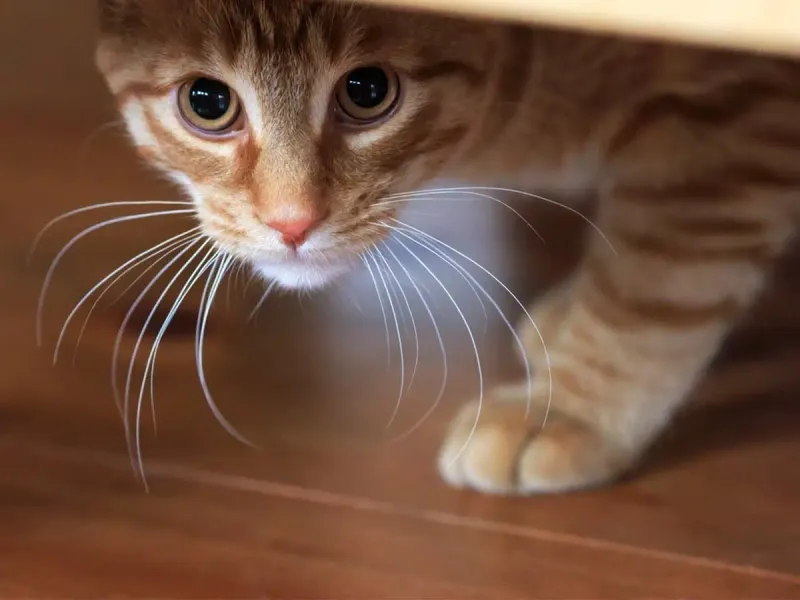📖 Table of Content:
- 1. Hiding More Than Usual
- 2. Sudden Aggression
- 3. Excessive Grooming or Over-Grooming
- 4. Avoiding Interaction
- 5. Changes in Appetite
- 6. Sudden Litter Box Issues
- 7. Flattened Ears or Tucked Tail
- 8. Increased Vocalization
- 9. Sleeping in Unusual Spots
- 10. Decreased Playfulness
- 11. Tail Flicking or Swishing
- 12. Overreacting to Sounds or Movements
Cats may be known for their mysterious nature, but that doesn’t mean they don’t communicate their feelings — they just do it in subtle, often easily overlooked ways. Whether it’s a slight change in routine or a flick of the tail, our feline friends have their own language when something’s not quite right. Unlike dogs, cats tend to internalize stress and emotional discomfort, making it all the more important for us to notice the quiet signals they give off.
An upset cat might not cry or throw a tantrum, but it will show you — if you’re paying attention. Behavioral changes such as hiding more than usual, over-grooming, or avoiding social interaction can all be signs that your cat is stressed, anxious, or unhappy. These signals are often mistaken for quirks or temporary moods, but in reality, they’re a call for help your cat can’t express in words.
Understanding these subtle behaviors can make all the difference in maintaining your cat’s health and emotional well-being. By learning to recognize the quiet cues of feline distress, you can respond with the care, comfort, or environmental changes your cat needs. Read on to discover the 12 subtle behaviors that may mean your cat is feeling upset — and how you can help.
1. Hiding More Than Usual
Has your cat become a closet dweller, hiding away more than usual? This behavior might indicate stress or fear. Cats love alone time, but excessive hiding can suggest they feel threatened or uneasy in their environment. Observe these changes, as they could be reacting to new pets, visitors, or even changes in their environment. Creating a safe space, filled with their favorite toys and blankets, might coax them out of hiding. Patience is key here, letting them know they are safe. Cats thrive in stability, so maintaining a consistent routine can help.
2. Sudden Aggression
Unexpected outbursts like hissing, growling, or swatting often surprise cat owners, especially if their pet is usually calm. While it might seem like your cat is just being moody, aggression is often a reaction to something deeper. Emotional upset, frustration, or fear can all manifest as hostile behavior. Stressful stimuli like loud noises, unfamiliar scents, or other animals can be culprits. Rather than punishing the aggression, observe the context in which it happens. Your cat may be attempting to defend itself from a perceived danger. It’s wise to consult with a vet if the aggression persists or worsens. Ensuring your cat has a consistent routine can also help reduce these reactive episodes.
3. Excessive Grooming or Over-Grooming
At first glance, grooming might seem like a sign your cat is just keeping clean. But if they begin licking obsessively — particularly in one spot — it could be a red flag. Cats often groom to self-soothe, and in times of stress, this behavior can become compulsive. Bald patches or irritated skin are common signs of over-grooming. Emotional distress, boredom, or even allergies can all contribute to this change. Try to keep an eye on when and where the behavior happens. Enrichment activities and interactive play can help redirect their focus. If it continues, a trip to the vet can rule out underlying medical issues.
4. Avoiding Interaction
Normally affectionate cats that suddenly become withdrawn are often trying to tell you something. Avoiding petting, eye contact, or even hiding when you enter a room may indicate emotional discomfort. Your cat may be feeling insecure or overwhelmed by recent changes. Whether it’s a move, new pet, or even your change in work schedule, cats notice disruptions. Sometimes they simply need space to recalibrate. Offering gentle attention on their terms can slowly rebuild trust. Always respect their boundaries and avoid forcing interaction. With time and stability, your cat may begin to seek closeness again.
5. Changes in Appetite
A noticeable shift in your cat’s eating habits is always worth paying attention to. Skipping meals, sniffing and walking away from food, or suddenly eating more than usual can point to emotional or physical stress. Cats are sensitive to changes in their environment, and even something like a new food bowl location can throw them off. Emotional upset often dampens their appetite, just like it does in humans. Alternatively, overeating might be a comfort-seeking behavior. You’ll want to ensure that these changes aren’t due to a medical issue. Monitoring feeding times and food preferences can help pinpoint the trigger. If concerns persist, consult your vet to rule out illness.
6. Sudden Litter Box Issues
One of the most frustrating behaviors for cat owners is when their pet stops using the litter box. However, this is rarely done out of spite. In fact, it’s a common stress response or indicator of an underlying health problem. Your cat may be associating the litter box with a negative experience, or they might be marking territory in response to feeling insecure. Sometimes, the type of litter or box location is the issue. Pay attention to the timing and location of the accidents. Any abrupt behavioral shift in bathroom habits deserves prompt investigation. A clean, quiet, and easily accessible box can help restore routine.
7. Flattened Ears or Tucked Tail
Body language is a powerful communication tool in cats. When their ears lay flat or their tail tucks under their body, they’re often feeling scared or threatened. These signs may accompany a crouched stance or dilated pupils. Don’t ignore these physical cues — they speak volumes about your cat’s emotional state. It’s common for these behaviors to appear when there’s unfamiliar activity, loud noises, or other pets around. Try removing the stressor or offering a safe place for retreat. Speak in soft tones and move slowly around them. With a bit of patience, you’ll help them feel more secure.
8. Increased Vocalization
An uptick in meowing or yowling can mean your cat is trying to express discomfort or distress. Some cats naturally “talk” more than others, but any sudden vocal changes are worth noting. They might be seeking reassurance, attention, or trying to alert you to a problem. Stress, loneliness, and even boredom can all lead to excessive vocalization. It’s important not to scold them, as this can make the situation worse. Instead, try to understand the context: Is it happening at certain times or after specific events? Offering more structured playtime and affection might help. If the vocalizing continues, consider a vet check to rule out physical issues.
9. Sleeping in Unusual Spots
Cats love to nap, but where they choose to sleep can be very telling. If your cat suddenly starts curling up in places they’ve never shown interest in — like the bathtub, closet, or on hard surfaces — it could be a sign of stress. These hidden or uncomfortable locations might feel safer to them during times of emotional turmoil. Often, cats will seek out spots that are quiet and less trafficked when they’re not feeling emotionally well. Reassess their environment to see if something has made their usual resting places unappealing. Offering cozy, enclosed beds in peaceful areas can help. Respect their choices, but stay alert to any accompanying symptoms. The more comfortable they feel, the more likely they are to return to normal habits.
10. Decreased Playfulness
When your once-playful cat starts ignoring toys or skipping interactive time, it might signal that something’s wrong. A lack of interest in play can stem from emotional distress or even early signs of depression. Play is not just fun for cats — it’s also an outlet for physical and mental energy. Without it, they can become more withdrawn and anxious. Make sure to observe when this shift began and what else changed around that time. Introducing variety in toys and dedicating short bursts of play each day can re-engage them. It’s also a great bonding opportunity. If nothing works, consult with a vet or behaviorist for further insight.
11. Tail Flicking or Swishing
That flicking tail might look cute, but it’s often a warning sign in cat body language. Quick or jerky tail movements typically indicate agitation or overstimulation. You may see this during petting, when they’re watching something intently, or after an unexpected noise. It’s your cat’s way of saying “I’m not okay with this.” Ignoring this sign can lead to escalation, like biting or scratching. Learn to associate tail behavior with their mood and stop interactions when needed. Giving them a break or redirecting their attention helps diffuse the situation. Over time, you’ll get better at reading and respecting their boundaries.
12. Overreacting to Sounds or Movements
Your cat suddenly dashes away at the sound of a door closing? That may not be normal. Heightened sensitivity to everyday stimuli like footsteps, clattering dishes, or even the sound of your voice can point to anxiety. Cats that are emotionally unsettled often operate in a state of hyper-vigilance. This means they’re more likely to react quickly — and dramatically — to things they’d normally ignore. Watch for body tension, wide eyes, or rapid breathing. You can help by maintaining a calm environment and minimizing abrupt changes. Soothing sounds or pheromone diffusers may also reduce their reactivity over time.
